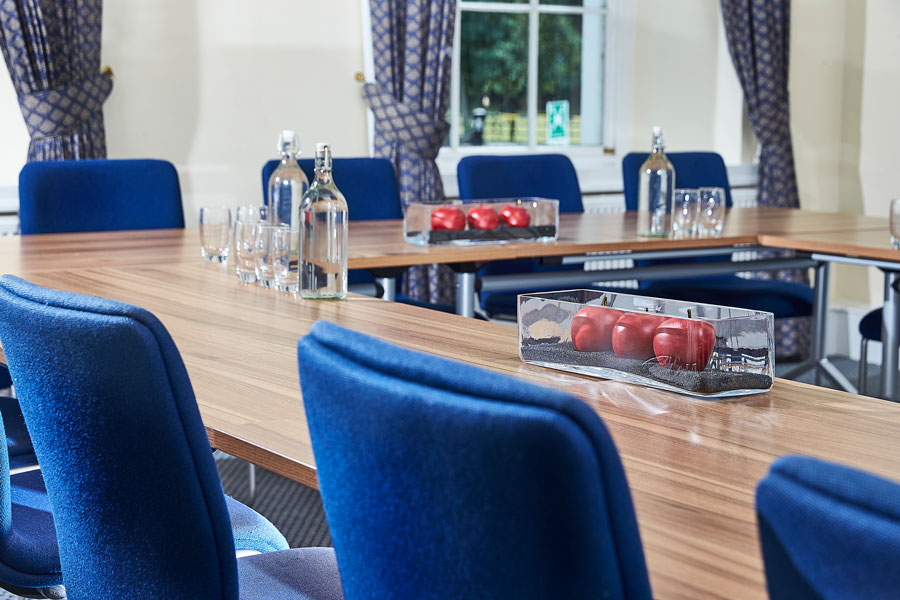
16 Best Practices for Productive Meetings
In the fast-paced world of business, meetings play a vital role in communication and decision-making. However, not all meetings are created equal and the success of a meeting largely depends on its productivity. Unproductive meetings can be a massive drain on time and resources. Approximately 15% of an organisation’s time is allocated to meetings, and research indicates that a substantial 71% of these meetings are deemed unproductive. Fortunately, there are best practices you can implement to ensure your meetings are efficient, purposeful, and productive.
In this blog, we’ll explore the best practices for conducting meetings that are not only efficient but also yield actionable outcomes.
Unproductive Meetings Facts and Stats
Let’s begin by shedding some light on the issue. Did you know that, on average, UK workers waste 13 days a year in meetings? That’s a staggering amount of time that could be used for more productive tasks. Executives aren’t exempt from this issue, spending over two days per working week preparing for meetings. The cost of unproductive meetings is a whopping $100 million per year for large companies. Clearly, there’s room for improvement.
Setting the Stage for Productive Meetings

Now, let’s delve into the best practices for productive meetings:
- Set Clear Objectives
The foundation of any productive meeting is a well-defined purpose. Before scheduling a meeting, ask yourself: What do you aim to achieve by the end of it? Clear objectives keep discussions on track and ensure that everyone in the room knows precisely why they’re there.
- Create an Agenda
A structured agenda is your roadmap to a successful meeting. Define the purpose of your meeting, and decide whether it’s really necessary. If it’s primarily about sharing information, consider whether a report might be a more efficient way to disseminate that information.
Meetings should be reserved for activities that truly benefit from real-time discussions, such as decision-making or interactive brainstorming. Once you know the purpose of your meeting, outline specific topics, allocate time for each, and distribute the agenda to participants in advance. This best practice for meetings not only provides clarity but also allows attendees to come prepared, contributing to a more productive discussion.
- Selecting Meeting Attendees Wisely
Inviting the right people is crucial. Less is often more when it comes to meeting attendance. The more attendees there are, the higher the likelihood of reduced productivity. Only invite individuals directly connected to the meeting’s agenda. Key decision-makers should always be in attendance, or the meeting may need to be postponed. It’s not a numbers game; it’s about quality participation.
- Time Management
Respect participants’ time by adhering to the schedule outlined in the agenda. For meetings best practices start and end the meeting promptly. To help keep discussions on track, you may even consider using a timer. Efficient time management is key to a productive meeting.
- Limit Meeting Duration
Efficiency and brevity go hand in hand when following meeting best practices. Many successful meetings can be wrapped up within 30 minutes or less. Ensure you address key points concisely, saving time for more actionable discussions.
- Facilitate Active Participation
Encourage all participants to engage actively. Invite their input, questions, and concerns. Fostering a sense of involvement and ownership in the meeting’s outcomes not only boosts productivity but also fosters collaboration.
Meetings Best Practices: Staying Focused and Accountable

- Stay on Topic
It’s easy for discussions to veer off track, especially in dynamic group settings. Politely guide conversations back to the agenda whenever they stray. Acknowledge off-topic comments and consider addressing them separately if necessary.
- Use Visual Aids
Visual aids, such as slides or documents, can enhance understanding and maintain focus when needed. They provide a visual structure for complex ideas and data, making discussions more effective.
- Effective Meeting Follow-Up Actions
Meetings should result in actionable outcomes. For meeting best practices, end each meeting with an action plan that outlines follow-up tasks, responsibilities, and deadlines. Ensure that all participants understand their roles and are held accountable for their tasks.
This guarantees that discussions translate into action, and outcomes are not forgotten.
- Share Relevant Information Post-Meeting
After the meeting concludes, share the meeting notes and relevant documents. This not only serves as a reminder of the agreed-upon action points but also shows participants that their contributions are appreciated. Sharing any referenced assets used in the meeting can also be helpful and reinforce transparency.
- Limit Distractions with Meeting Ground Rules
Establish ground rules to maintain focus and efficiency. Consider banning distractions like technology, mobile phones, or excessive refreshments to prevent meetings from dragging on unnecessarily. If someone is presenting, make it clear when it’s appropriate to interrupt, ask questions, or voice concerns. A focused atmosphere not only improves engagement but also leads to more meaningful discussions.
- Facilitate Decision-Making
For best practice for meetings focus on decision-making, establish a clear structure for presenting options, and reach a consensus. Avoid lengthy debates that can hinder progress.
- Review and Reflect
End each meeting with a recap of key takeaways. Verify that all goals and objectives have been met. This reinforces the meeting’s productivity and helps maintain a sense of accomplishment.
Constantly Striving for Improvement
- Continuous Improvement
The pursuit of excellence is ongoing. After each meeting, gather feedback from participants. Identify areas for improvement and utilise this feedback to enhance the quality and efficiency of future meetings.
- Consider Alternative Meeting Formats
Explore alternative meeting formats, such as stand-up meetings, virtual meetings, or hybrid meetings. Different formats may be more suitable for specific goals and participants, further optimising your meeting’s effectiveness.
Time to Implement Change
Incorporating these best practices into your meeting management can significantly enhance productivity. You’ll save valuable time and resources for your organisation while ensuring that your discussions lead to tangible, actionable outcomes.
Meetings can be a powerful way to share knowledge, formulate strategy, build rapport, and foster collaboration. If you’re curious about the impact of unproductive meetings and want to make a change, remember that with the right practices in place, you can transform your meetings from time-wasting sessions into productive and purposeful gatherings. Don’t be a part of the unproductive meetings statistics – be a catalyst for change in your organisation.
So, implement these meeting best practices to transform your meetings into powerful tools for communication and decision-making.
Enhance Your Meetings with Oxfordshire’s Meeting Rooms

Improving your meeting experience can lead to enhanced efficiency, increased workplace satisfaction, and a more positive office environment. Consider the benefits of holding your meetings offsite for a refreshing change. When it comes to crucial meetings, particularly with new clients, our high-spec meeting rooms can make a lasting impression.
At Milton Hill House, our experienced team excels in planning and executing productive meetings. We offer a selection of 20 flexible meeting rooms in Oxfordshire, accommodating up to 170 delegates. Whether it’s a large-scale gathering or an intimate discussion, we have the ideal facilities to suit your needs.
Our talented chefs offer a range of catering styles to keep your delegates refreshed throughout the day. For those travelling from afar, Milton Hill House offers 114 double and twin guest rooms. Contact our team today to secure your space and kickstart your meeting on the right note.


